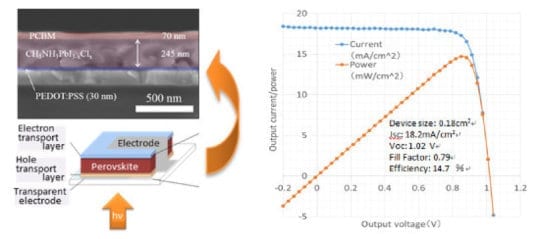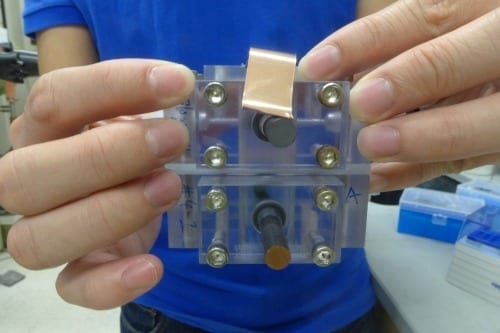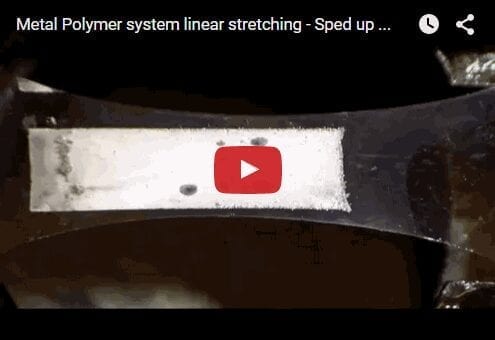
Credit: NIMS
Researchers in Japan succeeded in producing highly reproducible and highly stable perovskite solar cells by a low-temperature solution process.
The results were published the Journal of Materials Chemistry A issued by the Royal Society of Chemistry (UK).
The ad hoc Team on Perovskite PV Cells (Team Leader: Kenjiro Miyano) of the Global Research Center for Environment and Energy based on Nanomaterials Science (GREEN) at the National Institute for Materials Science (NIMS) succeeded in producing highly reproducible and highly stable perovskite solar cells by using a low-temperature solution process, which is essential for realizing next-generation solar cells with such characteristics as low-cost, lightweight and flexible (Figure).
Conventional perovskite solar cells produced by a low-temperature solution process had problems in terms of stability and reproducibility, and details of their operational mechanism were difficult to clarify. In this research, the team newly developed a chlorine-mediated interdiffusion method, in which chlorine is added in the process of forming perovskite crystals, and realized high-efficiency perovskite solar cells having the following excellent characteristics by using a low-temperature solution process.
- A process temperature of less than 140°C at the most (high compatibility with flexible substrates, etc.)
- Excellent stability exhibiting consistent output characteristics for a long period
- Excellent durability maintaining stable output characteristics even under continuous light exposure for about two hours
- Highly reliable output characteristics and reproducibility exhibiting consistent conversion efficiency irrespective of the voltage sweep direction, etc.
Use of a low-temperature solution process makes it possible to produce solar cells with lightweight and flexible substrates such as plastic. In addition, the realization of highly stable, durable, and reproducible devices based on this research result enables detailed analysis of the operation of the devices even under continuous light exposure. Therefore, elucidation of the operational mechanism, which had been difficult in the past, is expected to advance remarkably toward practical application of perovskite solar cells.
The Latest on: Perovskite solar cells
[google_news title=”” keyword=”perovskite solar cells” num_posts=”10″ blurb_length=”0″ show_thumb=”left”]
via Google News
The Latest on: Perovskite solar cells
- Researchers outline path forward for tandem solar cellson April 26, 2024 at 7:22 am
As the old saying goes, two heads are better than one. The same is true when it comes to solar cells working in tandem. Researchers at the U.S. Department of Energy's National Renewable Energy ...
- Ultra-thin, flexible solar cells demonstrate their promise in a commercial quadcopter droneon April 24, 2024 at 9:27 am
Whether on Earth or in space, autonomous energy is critical in order to keep power systems running independently for extended periods of time, particularly in remote or unpredictable environments.
- Photovoltaic Research Challenges: Overcoming Hurdles in Solar Technologyon April 24, 2024 at 7:44 am
Solar photovoltaic (PV) technology has evolved in the past few years, particularly in solar panels and systems. However, researchers and institutions are actively working to overcome limitations to ...
- Perovskite cells power palm-sized droneon April 24, 2024 at 4:19 am
Researchers at the Johannes Kepler University in Linz and the Linz Institute for Organic Solar Cells in Austria have developed ultra-lightweight quasi-2D perovskite solar cells with a power output of ...
- Solar Energy Newson April 23, 2024 at 5:00 pm
Apr. 8, 2024 — Researchers have fabricated a new four-terminal organic solar cell with a tandem configuration with a 16.94% power conversion efficiency (PCE). The new device is composed by a ...
- Solar-cell-packin' drone uses sunlight for on-the-spot rechargingon April 19, 2024 at 12:19 pm
Multirotor drones may one day be able recharge their batteries while out and about, instead of having to return to a charging station. They could do so via onboard ultra-thin solar cells, which have ...
- Researchers develop ‘half-tandem’ perovskite solar cells with conversion efficiency of 27.63%on April 19, 2024 at 2:53 am
Khajeh Nasir Toosi University of Technology reserachers have developed ‘half-tandem’ solar cells with a power conversion efficiency of 27.63% ...
- Pros and cons of solar energyon April 18, 2024 at 7:13 am
Solar power could become the primary source of electricity worldwide by 2050 – but there are still clouds in the forecast ...
- Solar cells 20 times thinner than a strand of human hairon April 18, 2024 at 12:42 am
Solar-Powered Drones Support Sustainable Aviation. Developed by researchers at the Johannes Kepler University Linz, the new and ...
- New vapor deposition tech could accelerate commercialization of perovskite solar cellson April 17, 2024 at 9:15 am
A U.S.-based team developed a vapor deposition technique to fabricate outperforming all-inorganic perovskite thin films in under 5 minutes in a continuous process. The adoption of the proposed ...
via Bing News










